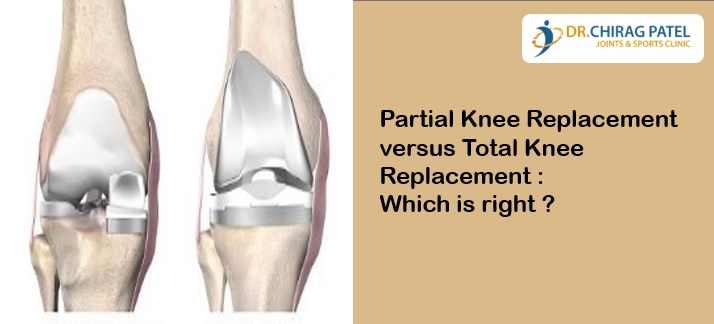Need For Knee Replacement Surgeries:
Knee is a source of trouble for patients suffering from advanced arthritis. Patients are hampered while doing simple tasks such as such as walking, due to severe knee pain. Relieving the pain of the knees is the primary concerns of the orthopaedics and knee replacement surgery is the way out. Depending on the patient’s knee conditions, specialists are operating a total knee replacement or partial replacement.
Partial Knee Replacement
The knee has three compartments — the medial compartment (inside aspect of the knee), the lateral compartment (outside of the knee) and the patellofemoral compartment (in front of the knee). If a patient has degeneration in only one compartment, a partial knee replacement is advised for the patients. If only one portion is damaged, implant is much smaller and only the bone and soft tissue that are unhealthy are reconstructed during the surgical procedure. Rest of the knee is left alone and no further surgery is taken.
Benefits:
- Less bone and soft tissue dissection
- Blood loss is less
- Less complications
- Recovery is faster
Best candidates for Partial Knee Replacement Treatment:
- Patients with only one compartment of knee affected
- Movement was good and not fully impaired before the surgery
Total Knee Replacement Treatment:
Total knee replacement is advisable after the patients have lost mobility and are in pain due to arthritis. Damaged knees lead to majority of joint mobility, are unable to complete routine daily tasks like walking, climbing stairs and complete necessary daily activities. A knee replacement is also referred to as knee arthroplasty or knee “resurfacing” because only the surface of the bones is replaced. All the 3 compartments are replaced with the prosthesis made out of metal, ceramic, or high-grade plastic and polymer components.
Benefits:
- Better relief from the pain in the knee
- Implants last for 20 years
- Replace all the compartments of knees at one go
Best Candidates for the Surgery:
- Older patients with extensive pain in the knees
- Older patients with arthritis in the knees
Dr Chirag Patel reviews the cases of every patient with utmost care while trying to find a best solution. Every patient medical history brings its own set of challenges and finding the best treatment is the way forward. The decision to have a partial versus total knee replacement surgery is decided after a careful diagnosis and recommendation by the doctor. With medical technology on the rise, one can see implants being designed keeping in mind the patient’s lifestyle and anatomy.
So partial and total knee replacement is duly dependent on the patient medical history and his needs.





